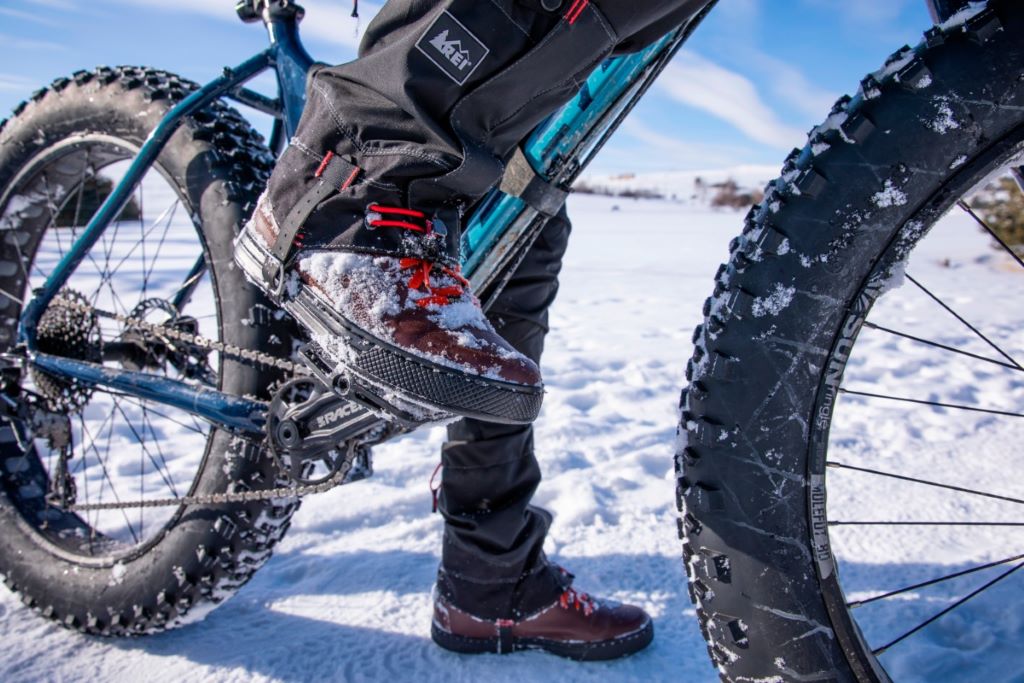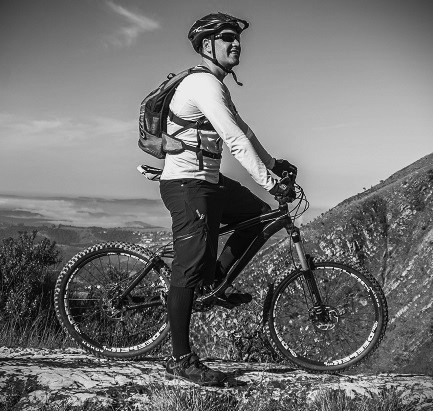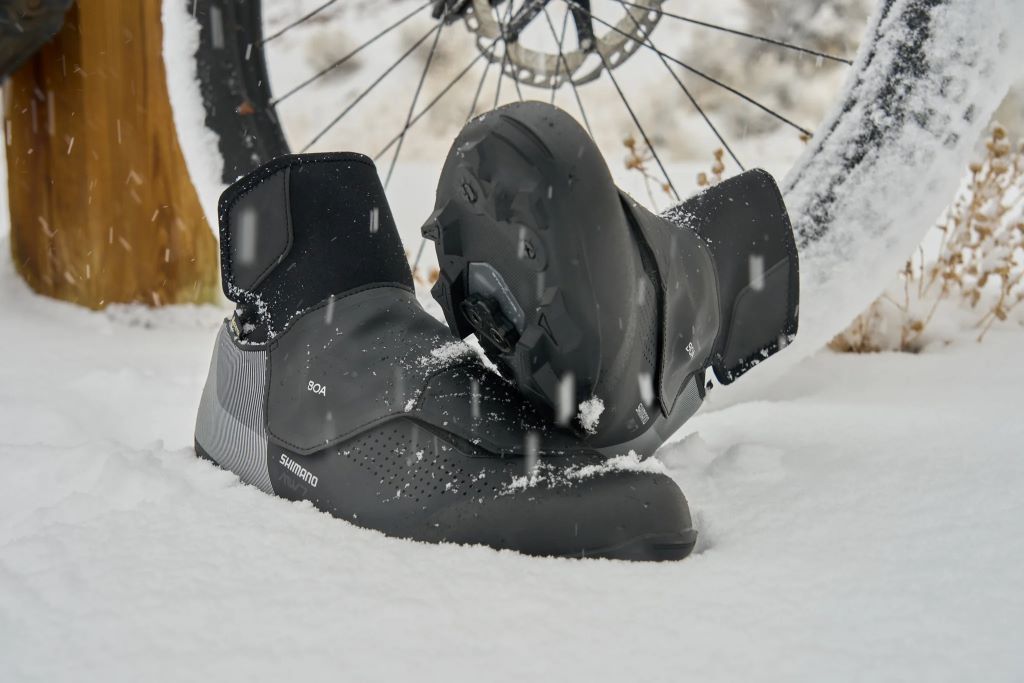Winter mountain biking presents a unique set of challenges, with cold temperatures, snow, and ice demanding specialized gear. Winter mountain bike shoe are designed to keep your feet warm, dry, and comfortable in harsh conditions, enabling you to enjoy riding year-round. Along with warm clothing and appropriate bike tires, winter mountain bike shoes are essential for tackling the trails in winter.
Pros of Winter Mountain Bike Shoe:
- Warmth and Insulation: Winter mountain bike shoes are built with insulating materials like Thinsulate, Primaloft, or fleece linings to trap heat and keep your feet warm in freezing temperatures.
- Water Resistance or Waterproofing: Many winter mountain bike shoes feature water-resistant or waterproof membranes like Gore-Tex or eVent to prevent moisture from seeping in and keep your feet dry.
- Increased Traction: Winter mountain bike shoes feature aggressive tread patterns with deep lugs or studs. This design enhances grip on snow, ice, and other slippery surfaces.
- Protection from the Elements: Winter mountain bike shoes offer protection from wind, cold, and debris, with features like high ankle cuffs, gaiters, and reinforced toe boxes.
- Compatibility with Winter Pedals: Most winter mountain bike shoes work with either flat pedals or clipless pedals with SPD cleats. This gives you the flexibility to choose your preferred pedal system.
Cons of Winter Mountain Bike Shoe:
- Bulkier and Heavier: Winter mountain bike shoes tend to be bulkier and heavier than regular mountain bike shoes due to the additional insulation and protective features.
- Reduced Breathability: The waterproof or water-resistant membranes in winter mountain bike shoes can reduce breathability, potentially leading to sweaty feet in milder conditions.
- Limited Flexibility: The thicker materials and insulation in winter mountain bike shoes can restrict flexibility compared to regular mountain bike shoes.
- Higher Price: Winter mountain bike shoes tend to cost more than regular ones because of their specialized materials. Their construction is designed to offer better protection and insulation for cold-weather riding.
- Potential for Overheating: In milder winter conditions, or during intense rides, winter mountain bike shoes can lead to overheating and discomfort.
Frequently Asked Questions:
1. What temperature are winter mountain bike shoes good for?
Winter mountain bike shoes are typically suitable for temperatures ranging from freezing (0°C/32°F) down to -10°C/14°F or even colder, depending on the specific shoe and your tolerance to cold.
2. Can I use regular mountain bike shoes in winter?

While possible in mild winter conditions, using regular mountain bike shoes in winter is not recommended. They lack the insulation, water resistance, and traction necessary for optimal performance and comfort in cold, wet, or snowy conditions.
3. How do I choose the right size winter mountain bike shoes?
It is crucial to consider the thicker socks you’ll likely wear in winter when choosing the size of your winter mountain bike shoes. It’s advisable to try them on with the socks you intend to use and ensure a comfortable fit with enough room to wiggle your toes.
4. How do I care for my winter mountain bike shoes?
Cleaning and maintenance are essential for prolonging the lifespan of your winter mountain bike shoes. After each ride, remove any dirt or debris, and allow them to air dry completely. Avoid using direct heat sources like radiators or hairdryers, as they can damage the materials. Some winter mountain bike shoes may be machine washable, so check the manufacturer’s instructions.
5. Can I use winter mountain bike shoes for other activities like hiking or snowshoeing?
While possible, using winter mountain bike shoes for other activities is not ideal. They are specifically designed for cycling and may not provide the optimal support, flexibility, or traction required for hiking or snowshoeing.
Related: Mastering the Clip-In: A Comprehensive Guide to Mountain Bike Shoes
Making an Informed Decision:
Choosing the right winter mountain bike shoes requires careful consideration of several factors, including:
- Climate and Riding Conditions: Assess the typical winter temperatures and conditions in your area to determine the level of insulation and water resistance you need.
- Personal Preferences: Consider your tolerance to cold, preferred pedal system, and desired features like gaiters or high ankle cuffs.
- Budget: Set a realistic budget and compare different brands and models to find the best value for your money.
- Reviews and Recommendations: Read online reviews to gather information about the performance and durability of various winter mountain biking shoes. Seek recommendations from experienced riders for additional insights.
By carefully considering these factors and conducting thorough research, you can find the ideal pair of winter mountain bike shoes. This will keep your feet comfortable and allow you to enjoy mountain biking even in the toughest winter conditions.
Related: What Kind of Shoes Should I Wear for Cycling? Pro Tips
Additional Tips for Winter Mountain Biking:
- Layer your clothing: Dress in layers to regulate your body temperature and adapt to changing conditions.
- Protect your extremities: Wear warm gloves, a hat, and a neck gaiter to prevent heat loss from your hands, head, and neck.
- Use studded tires: Consider using studded tires for enhanced traction on icy or snowy trails.
- Ride with caution: Be mindful of slippery surfaces and adjust your riding style accordingly.
- Stay hydrated: Drink plenty of fluids, even in cold weather, to prevent dehydration.
- Have fun! Embrace the challenge and beauty of winter mountain biking and enjoy the unique experience it offers.
Remember, investing in a good pair of winter mountain bike shoes is essential for comfortable and enjoyable winter riding. By choosing wisely and following these tips, you can continue to explore the trails and experience the joy of mountain biking throughout the year.

Welcome to outdoorxsports.com! I’m Russell, your guide to the awesome world of mountain biking. This blog is all about building a community of riders who love to share their passion for the sport. Expect inspiring stories, local trail recommendations, fun challenges, and tips for making the most of your time on two wheels.

